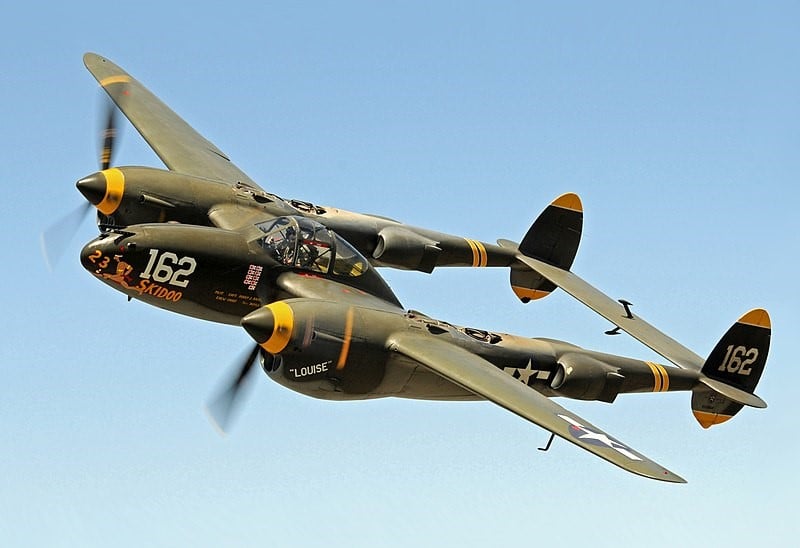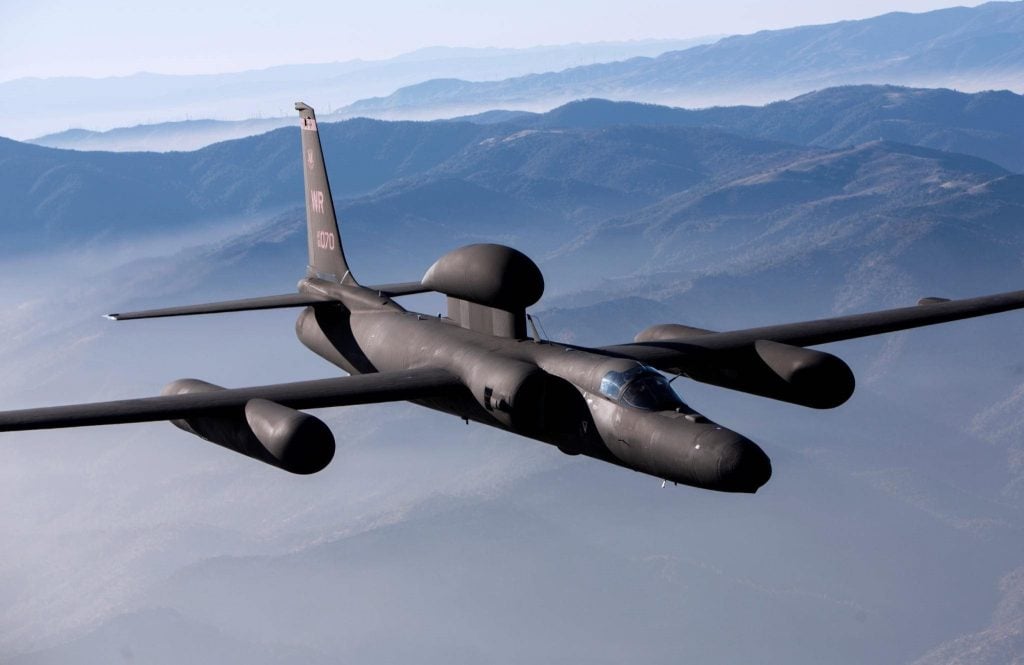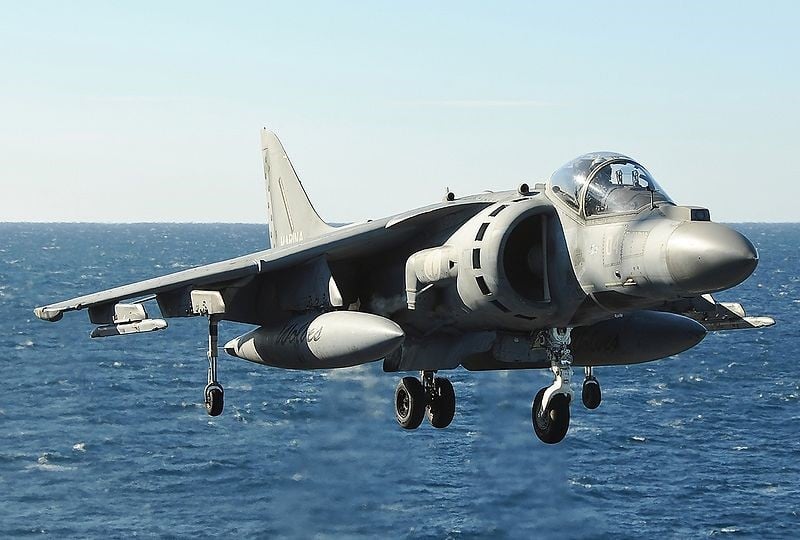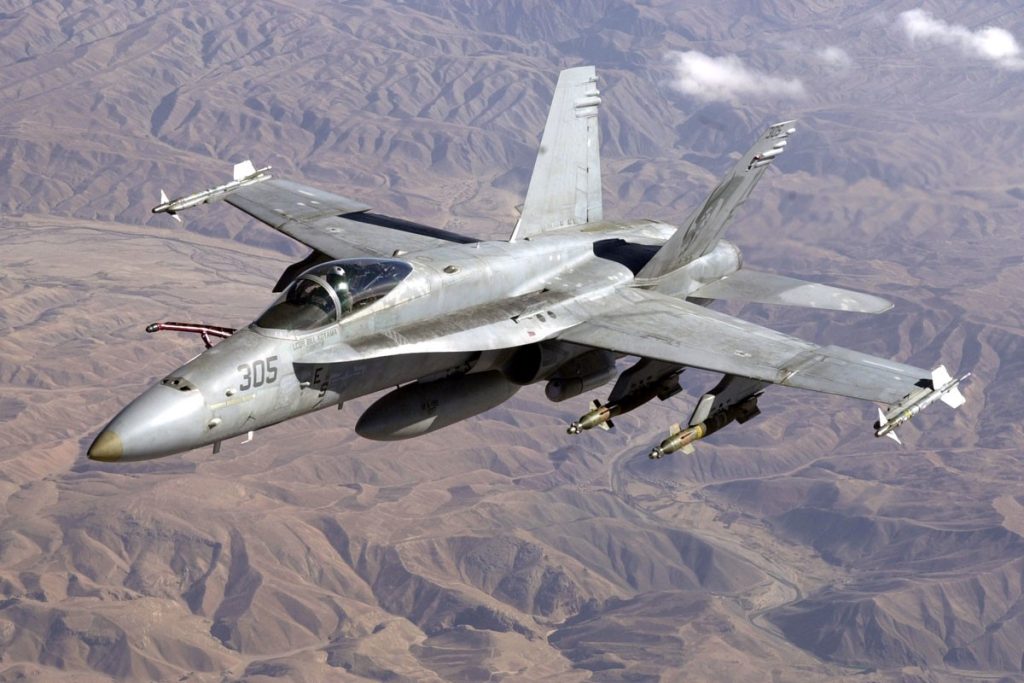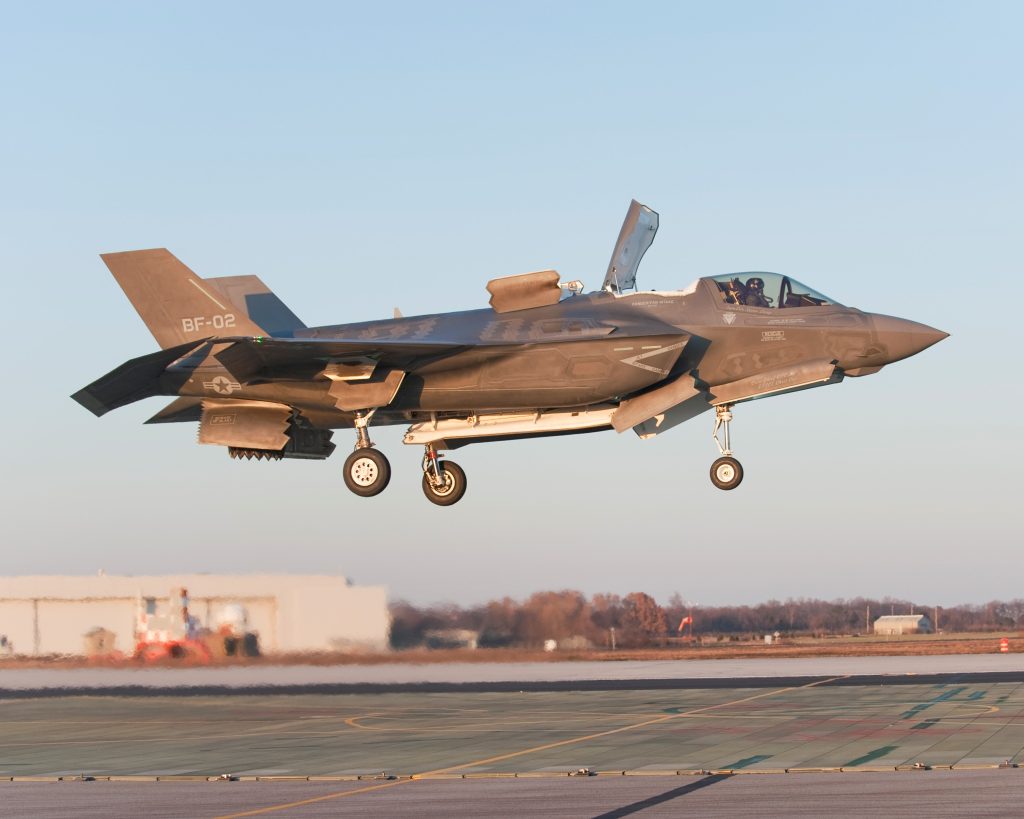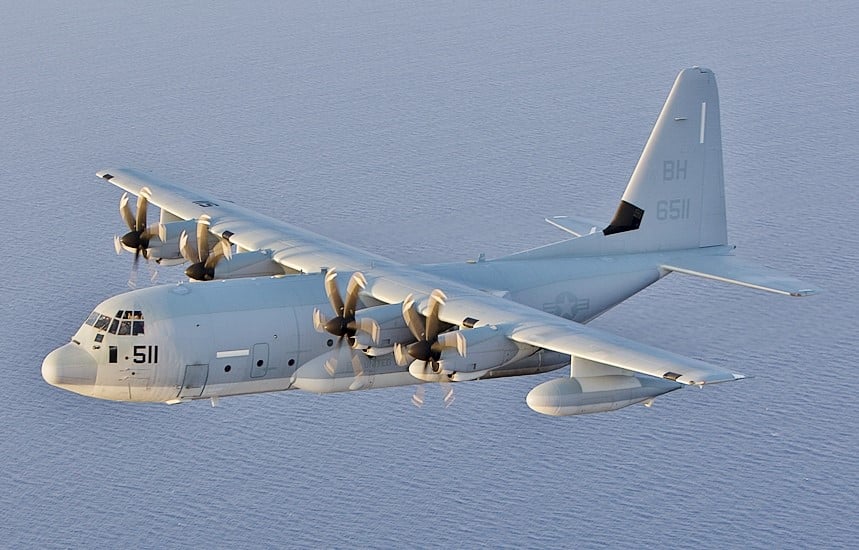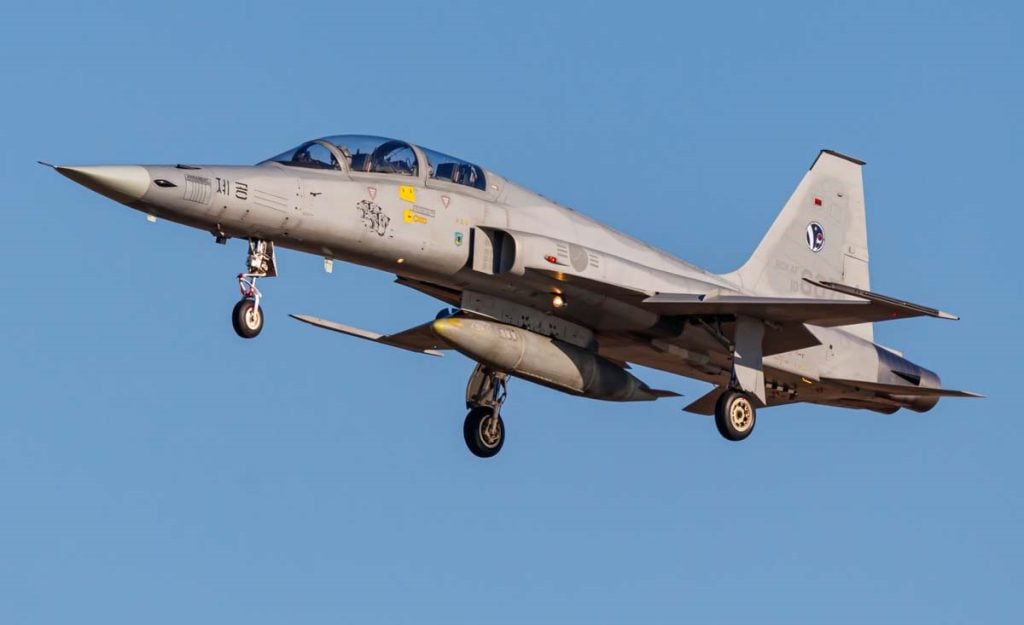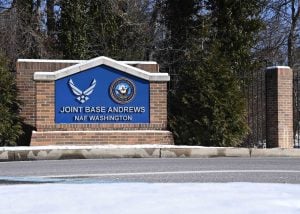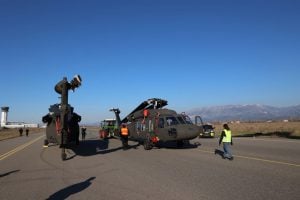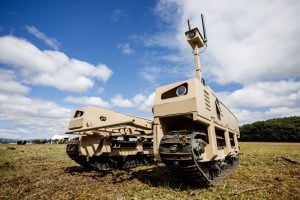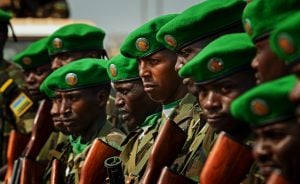The United States Marine Corps (USMC) boasts a formidable array of aviation assets, including a diverse fleet of fixed-wing aircraft designed to fulfill various operational roles. These aircraft not only enhance the Marines’ combat capabilities but also play a crucial role in supporting ground forces during missions.
In this article, we will explore the top 5 fixed-wing planes of the US Marine Corps, examining their specifications, roles, and significance within the military framework.
Also Read | What Does the Baton Represent for Indian Army Officers?
1. AV-8B Harrier II
Overview
The AV-8B Harrier II is a vertical/short takeoff and landing (V/STOL) aircraft that has been a staple of Marine aviation since its introduction in 1981. With approximately 87 units still in service, the Harrier has proven itself as a reliable ground attack platform, capable of operating in diverse environments.
Specifications
- Role: Ground attack aircraft
- Manufacturer: BAE Systems and Boeing
- Service Entry: 1981
Performance and Capabilities
The Harrier II is renowned for its unique ability to take off and land vertically, making it ideal for operations in confined spaces. Despite its aging fleet, the Harrier has adapted to modern combat scenarios, including recent engagements in the Red Sea, where it successfully intercepted hostile drones.
Transition to F-35B
As the Harrier fleet ages, the Marine Corps is gradually transitioning to the more advanced F-35B Lightning II. This next-generation stealth fighter offers superior capabilities, including enhanced payload capacity, advanced avionics, and stealth features, rendering the Harrier less competitive in contemporary warfare.
Future Outlook
While the Harrier continues to operate effectively, its retirement is anticipated around 2026. The transition to the F-35B marks a significant upgrade in the Marine Corps’ aerial capabilities, ensuring that they remain at the forefront of modern military aviation.
2. F/A-18 Hornet
Overview
The F/A-18 Hornet has been a vital component of Marine aviation since its introduction in 1983, with around 138 units still in operation. This multirole fighter jet is designed for a variety of missions, including air-to-air combat, ground attack, and reconnaissance.
Specifications
- Role: Multirole fighter
- Manufacturer: Boeing Company and Northrop Grumman
- Service Entry: 1983
Versatility in Combat
The F/A-18 Hornet is celebrated for its versatility, allowing it to perform multiple roles effectively. From fleet air defense to close air support, the Hornet can adapt to various mission requirements. This adaptability has made it a cornerstone of USMC operations, particularly in carrier-based operations.
Transition to F-35B
The Hornet is gradually being phased out in favor of the F-35B, which offers enhanced capabilities and advanced technology. The transition reflects the Marine Corps’ commitment to modernizing its fleet and maintaining a competitive edge in aerial warfare.
Operational History
The F/A-18 has seen extensive action in various conflicts, contributing significantly to the success of Marine operations. Its ability to operate from aircraft carriers allows for rapid deployment and flexibility in response to emerging threats.
3. F-35B Lightning II
Overview
The F-35B Lightning II represents the pinnacle of Marine aviation technology, with approximately 127 units currently in service out of a planned fleet of 420. This fifth-generation stealth fighter is designed for vertical takeoff and landing, making it a game-changer for the Marine Corps.
Specifications
- Role: Multirole stealth fighter
- Manufacturer: Lockheed Martin, Northrop Grumman, and BAE Systems
- Service Entry: 2015
Advanced Capabilities
The F-35B is equipped with state-of-the-art avionics, sensor systems, and stealth technology, allowing it to operate effectively in contested environments. Its ability to evade detection and engage targets with precision makes it a formidable asset on the battlefield.
Combat Readiness
The Marine Corps became the second military force in the world to deploy the F-35 in combat, showcasing its capabilities in real-world scenarios. The aircraft’s ongoing upgrades and enhancements ensure that it remains at the cutting edge of military aviation.
Strategic Importance
The introduction of the F-35B marks a significant shift in Marine Corps aviation strategy. Its versatility, combined with advanced stealth features, allows for greater operational flexibility and effectiveness in various mission profiles.
Also Read | How to Overcome Nervousness in SSB Interview Screening Tests
4. KC-130 Super Hercules
Overview
The KC-130 Super Hercules is a vital aerial refueling and logistics platform, with 69 units currently in service. This aircraft enhances the operational range of Marine Corps fighter jets, ensuring they can sustain prolonged missions without the need for ground-based refueling.
Specifications
- Role: Aerial refueling and logistics
- Manufacturer: Lockheed Martin and Rolls Royce Corporation
- Service Entry: 1999
Aerial Refueling Capabilities
The KC-130 is designed to provide tactical refueling support for both fixed-wing and rotary-wing aircraft. This capability is essential for extending the operational reach of Marine aviation, particularly in expeditionary operations.
Multifunctional Role
In addition to its refueling capabilities, the KC-130 can be configured for various mission profiles, including cargo transport, medical evacuation, and battlefield illumination. This versatility makes it an indispensable asset for the Marine Corps.
Global Reach
The KC-130 has been deployed in numerous theaters of operation, providing critical support to ground forces and enhancing the effectiveness of aerial operations. Its ability to operate in austere environments further underscores its importance in modern warfare.
5. Northrop F-5
Overview
The Northrop F-5 is a lightweight, supersonic fighter aircraft that has served the Marine Corps in various roles since its introduction in 1964. While primarily used as an aggressor trainer, the F-5 remains a valuable asset for simulating enemy tactics and enhancing pilot training.
Specifications
- Role: Aggressor trainer
- Manufacturer: Northrop Grumman
- Service Entry: 1964
Training and Simulation
The F-5 is utilized to provide realistic training scenarios for Marine pilots, allowing them to hone their skills in air-to-air combat. Its smaller size and agility make it an effective adversary during training exercises, ensuring that pilots are well-prepared for real-world engagements.
Longevity and Adaptability
Despite being introduced in the 1960s, the F-5 has proven to be a durable and adaptable platform. Recent acquisitions of retired Swiss F-5s for training purposes demonstrate the Marine Corps’ commitment to maintaining a robust training pipeline for its aviators.
Future Prospects
While the F-5 is expected to remain in service until around 2026, its role as an aggressor trainer will continue to be vital for preparing Marine pilots for the complexities of modern aerial warfare. Its legacy as a reliable training platform will endure as the Marine Corps evolves its aviation strategy.
Also Read | 7 Tips To Improve Creativity in SSB Interview
Conclusion
The top five fixed-wing planes of the US Marine Corps represent a blend of legacy systems and cutting-edge technology. From the versatile AV-8B Harrier II to the advanced F-35B Lightning II, each aircraft plays a crucial role in maintaining the operational readiness and effectiveness of the Marine Corps. As the military landscape continues to evolve, the transition to modern platforms like the F-35B ensures that the Marines remain prepared to meet emerging challenges in the realm of aerial combat.
FAQs
1. What is the role of the AV-8B Harrier II in the Marine Corps?
The AV-8B Harrier II serves primarily as a ground attack aircraft, capable of vertical takeoff and landing, making it suitable for various combat scenarios.
2. How does the F/A-18 Hornet contribute to Marine operations?
The F/A-18 Hornet is a multirole fighter that performs various missions, including air-to-air combat, ground attack, and reconnaissance, enhancing the Marines’ operational flexibility.
3. What are the advanced features of the F-35B Lightning II?
The F-35B is equipped with state-of-the-art stealth technology, advanced avionics, and superior sensor systems, making it a formidable asset in modern aerial warfare.
4. Why is the KC-130 Super Hercules important for Marine aviation?
The KC-130 provides essential aerial refueling capabilities, extending the operational range of Marine Corps fighter jets and supporting various mission profiles.
5. How does the Northrop F-5 serve the Marine Corps today?
The Northrop F-5 is used primarily as an aggressor trainer, simulating enemy tactics to enhance pilot training and readiness for air combat scenarios.
